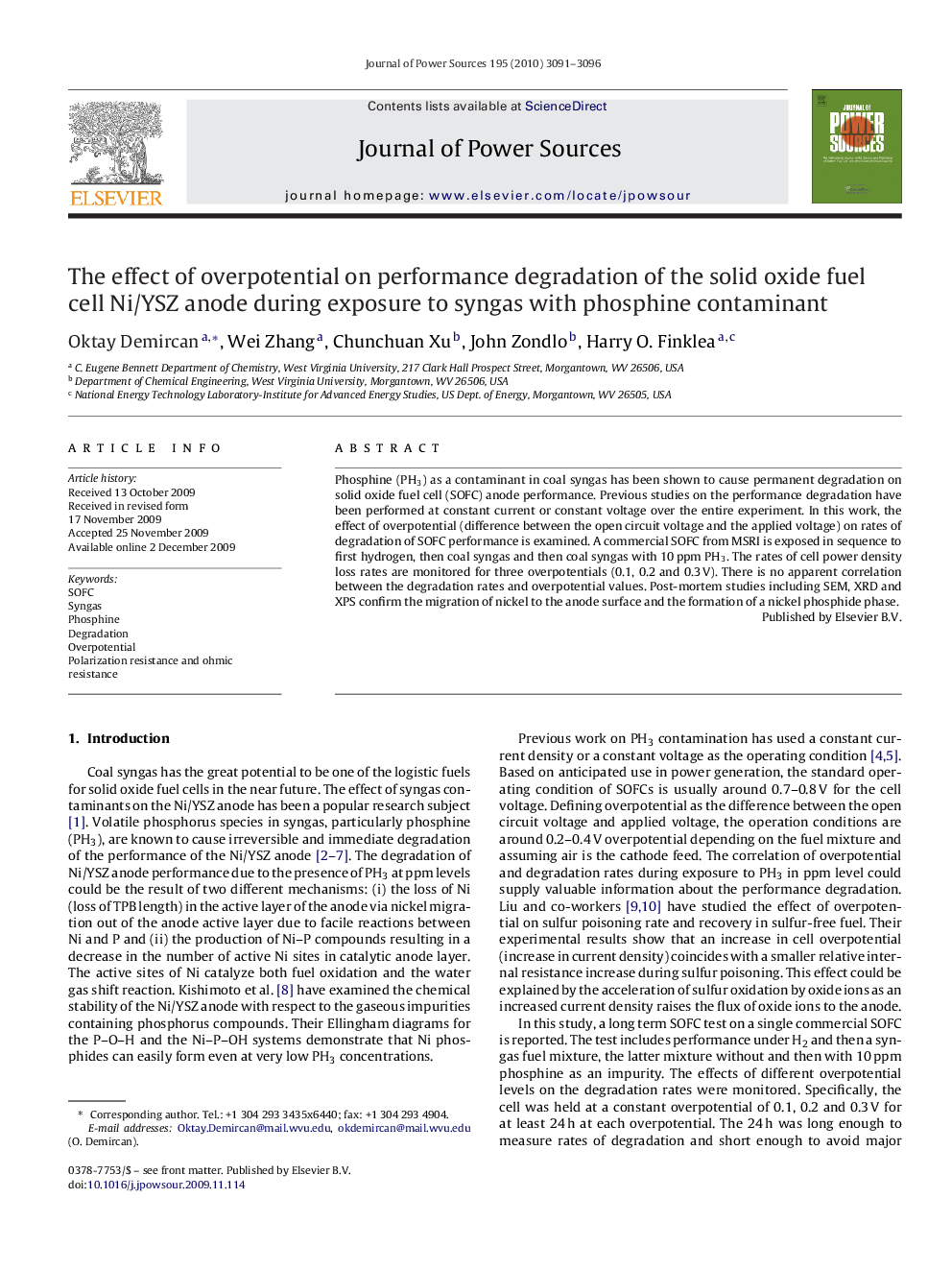| Article ID | Journal | Published Year | Pages | File Type |
|---|---|---|---|---|
| 1290496 | Journal of Power Sources | 2010 | 6 Pages |
Phosphine (PH3) as a contaminant in coal syngas has been shown to cause permanent degradation on solid oxide fuel cell (SOFC) anode performance. Previous studies on the performance degradation have been performed at constant current or constant voltage over the entire experiment. In this work, the effect of overpotential (difference between the open circuit voltage and the applied voltage) on rates of degradation of SOFC performance is examined. A commercial SOFC from MSRI is exposed in sequence to first hydrogen, then coal syngas and then coal syngas with 10 ppm PH3. The rates of cell power density loss rates are monitored for three overpotentials (0.1, 0.2 and 0.3 V). There is no apparent correlation between the degradation rates and overpotential values. Post-mortem studies including SEM, XRD and XPS confirm the migration of nickel to the anode surface and the formation of a nickel phosphide phase.
